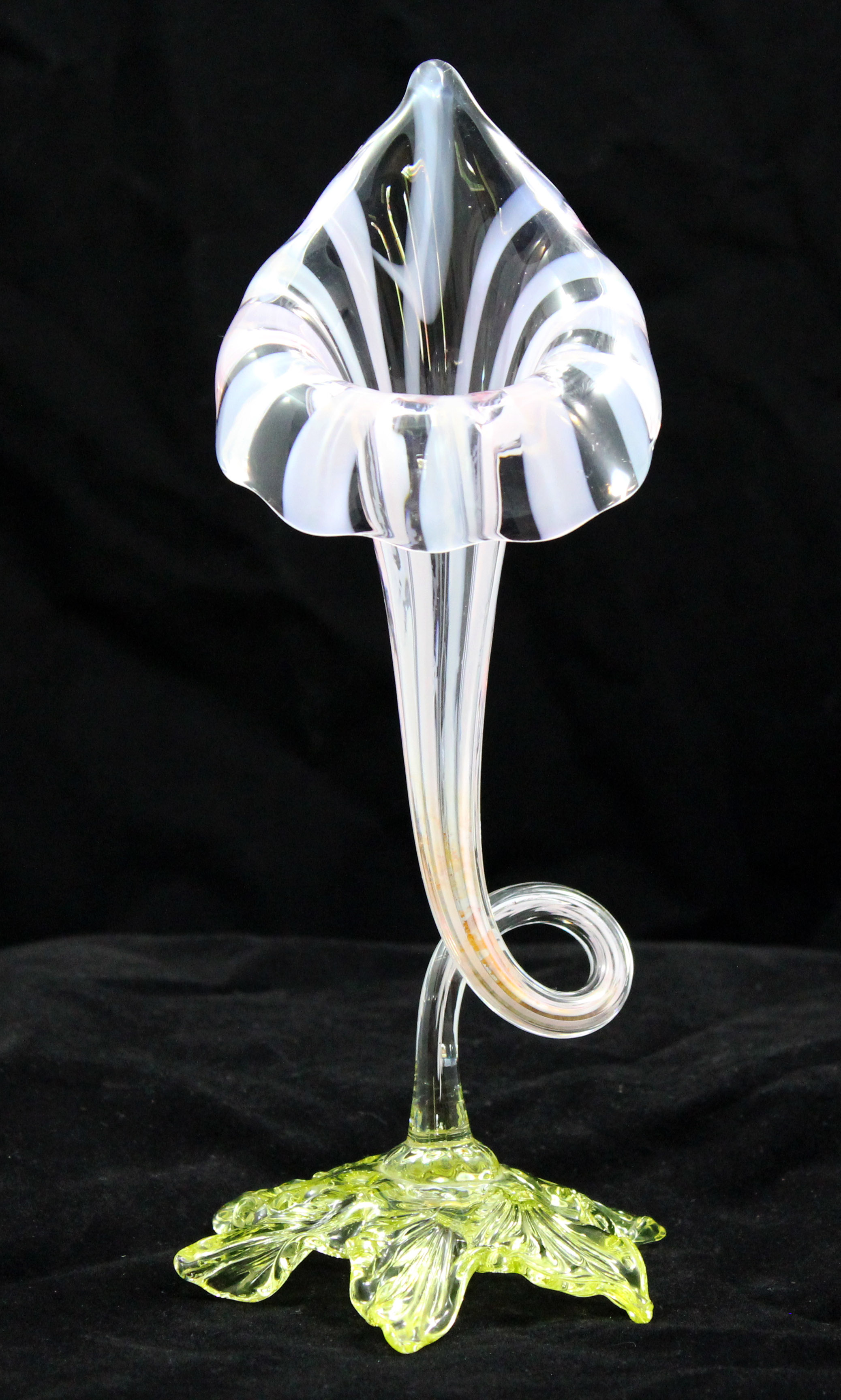Project Description
Uranium has been found in glass in trace amounts from as early as 79 CE–the date of a mosaic in a Roman Villa where uranium oxide was found at a 1% concentration. In the nineteenth century, uranium was a regular ingredient in much decorative glass, partially because it was inexpensive, and it added a vibrant color. Most uranium glass contains only trace amounts to 2% uranium, though some twentieth century pieces have up to 25% uranium. Though the first modern producer of uranium glass was Austrian, by the end of the nineteenth century uranium glass was manufactured by numerous companies in France, England, and the United States. Uranium glass is sometimes called “vaseline glass,” a colloquial name due to the frequency of yellow-green coloring in uranium glass. Today we can denote uranium glass by the fact that the uranium in its coloring will glow under an ultraviolet light. The style of vase, jack-in-the-pulpit, takes its name from a toxic English plant with a trumpet shape. The first jack-in-the-pulpit vase was made by Stevens and Williams, an English glass manufacturer, in 1854.
-Constantine Botimer, Class of 2019

